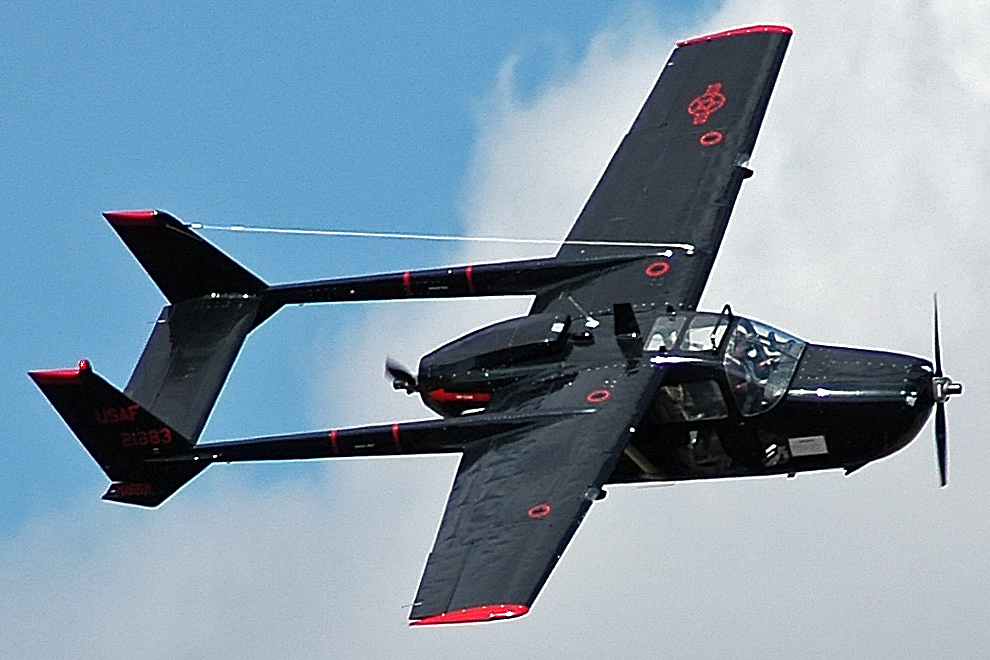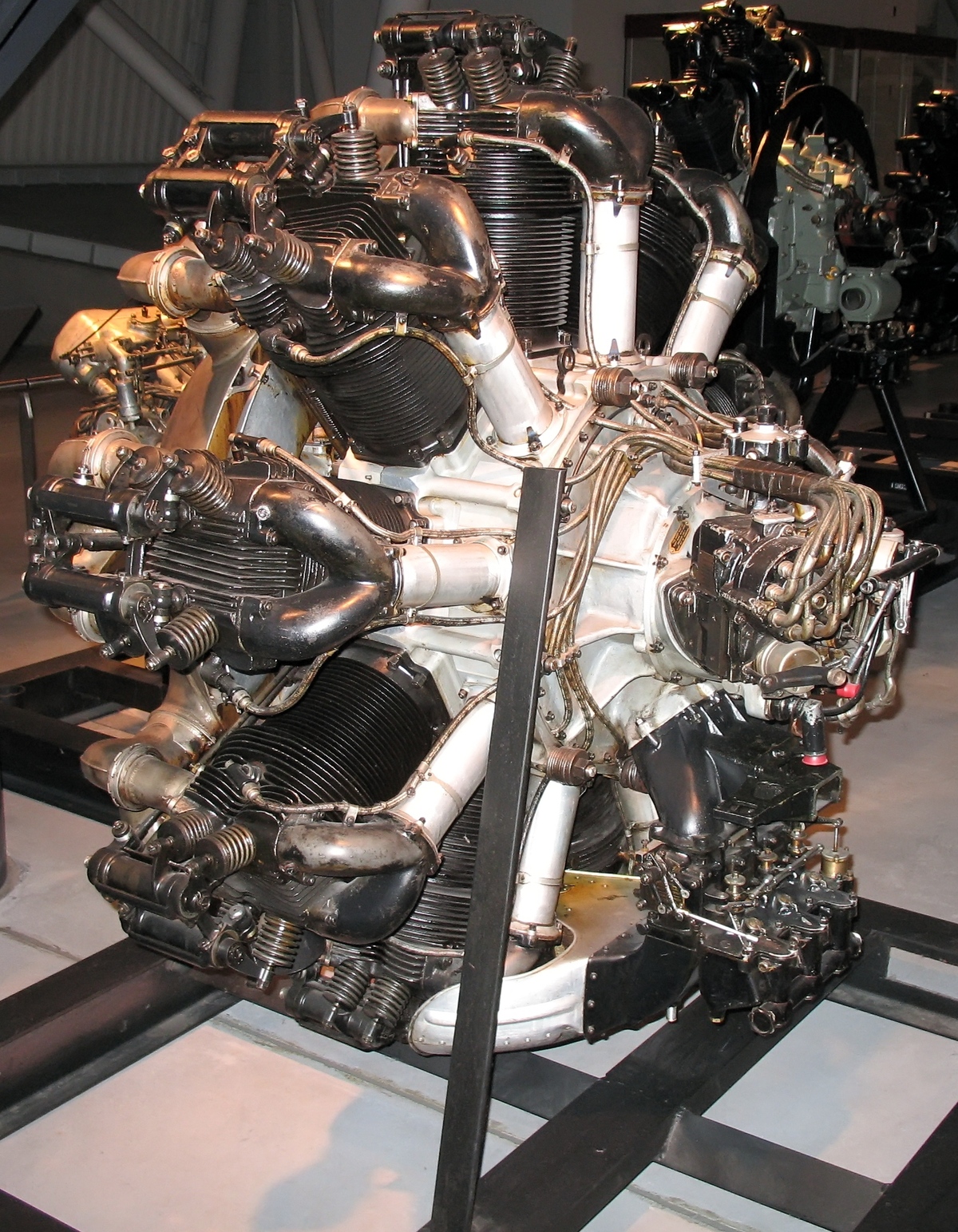|
Grigorovich TB-5
The Grigorovich TB-5 (russian: Григорович ТБ-5) was an experimental heavy bomber designed and tested in the Soviet Union in the early 1930s. Designed as a competitor for the Tupolev TB-3, the TB-5 was intended to be powered by two FED 24-cylinder X engines of 746 kW (1,000 hp) each. When these were canceled, the underwing pods were revised to each house a pair of Bristol Jupiter engines in a push-pull configuration An aircraft constructed with a push-pull configuration has a combination of forward-mounted tractor (pull) propellers, and backward-mounted ( pusher) propellers. Historical The earliest known examples of "push-pull" engined-layout aircraft incl .... Despite projected performance inferior to TB-3, it was hoped that TB-5 would gain an advantage by using less metal (in short supply at the time) thanks to its mixed construction of fabric-covered metal frame. Test flights began on 1 May 1931 with disappointing results, in part due to poor thrust of ... [...More Info...] [...Related Items...] OR: [Wikipedia] [Google] [Baidu] |
WikiProject Aircraft
A WikiProject, or Wikiproject, is a Wikimedia movement affinity group for contributors with shared goals. WikiProjects are prevalent within the largest wiki, Wikipedia, and exist to varying degrees within sister projects such as Wiktionary, Wikiquote, Wikidata, and Wikisource. They also exist in different languages, and translation of articles is a form of their collaboration. During the COVID-19 pandemic, CBS News noted the role of Wikipedia's WikiProject Medicine in maintaining the accuracy of articles related to the disease. Another WikiProject that has drawn attention is WikiProject Women Scientists, which was profiled by '' Smithsonian'' for its efforts to improve coverage of women scientists which the profile noted had "helped increase the number of female scientists on Wikipedia from around 1,600 to over 5,000". On Wikipedia Some Wikipedia WikiProjects are substantial enough to engage in cooperative activities with outside organizations relevant to the field at issue. For e ... [...More Info...] [...Related Items...] OR: [Wikipedia] [Google] [Baidu] |
WikiProject Aircraft/page Content
A WikiProject, or Wikiproject, is a Wikimedia movement affinity group for contributors with shared goals. WikiProjects are prevalent within the largest wiki, Wikipedia, and exist to varying degrees within sister projects such as Wiktionary, Wikiquote, Wikidata, and Wikisource. They also exist in different languages, and translation of articles is a form of their collaboration. During the COVID-19 pandemic, CBS News noted the role of Wikipedia's WikiProject Medicine in maintaining the accuracy of articles related to the disease. Another WikiProject that has drawn attention is WikiProject Women Scientists, which was profiled by '' Smithsonian'' for its efforts to improve coverage of women scientists which the profile noted had "helped increase the number of female scientists on Wikipedia from around 1,600 to over 5,000". On Wikipedia Some Wikipedia WikiProjects are substantial enough to engage in cooperative activities with outside organizations relevant to the field at issue. For e ... [...More Info...] [...Related Items...] OR: [Wikipedia] [Google] [Baidu] |
Soviet Union
The Soviet Union,. officially the Union of Soviet Socialist Republics. (USSR),. was a transcontinental country that spanned much of Eurasia from 1922 to 1991. A flagship communist state, it was nominally a federal union of fifteen national republics; in practice, both its government and its economy were highly centralized until its final years. It was a one-party state governed by the Communist Party of the Soviet Union, with the city of Moscow serving as its capital as well as that of its largest and most populous republic: the Russian SFSR. Other major cities included Leningrad (Russian SFSR), Kiev (Ukrainian SSR), Minsk ( Byelorussian SSR), Tashkent (Uzbek SSR), Alma-Ata (Kazakh SSR), and Novosibirsk (Russian SFSR). It was the largest country in the world, covering over and spanning eleven time zones. The country's roots lay in the October Revolution of 1917, when the Bolsheviks, under the leadership of Vladimir Lenin, overthrew the Russian Provisional Government ... [...More Info...] [...Related Items...] OR: [Wikipedia] [Google] [Baidu] |
Grigorovich (design Bureau)
Grigorovich was a Soviet Union, Soviet aircraft OKB, design bureau, headed by Dmitry Pavlovich Grigorovich. Aircraft Reconnaissance * Grigorovich M-1, M-1 - experimental observation flying boat, 1913 * Grigorovich M-1, M-2 - biplane flying boat, 1914 * Grigorovich M-1, M-3 - biplane flying boat, developed from the M-2, 1914 * Grigorovich M-1, M-4 - biplane flying boat, developed from the M-3 * Grigorovich M-5, M-5 - reconnaissance biplane flying boat, 1914 * Grigorovich M-5, M-6 - biplane flying boat * Grigorovich M-5, M-7 - biplane flying boat * Grigorovich M-5, M-8 - biplane flying boat * Grigorovich M-9, M-9 - biplane reconnaissance flying boat with machine gun, 1915, with cannon, 1916 * Grigorovich M-5, M-10 - flying boat, 1915 * Grigorovich MK-1, MK-1 - three-engine biplane reconnaissance-bomber seaplane, 1916 * Grigorovich M-15, M-15 - biplane reconnaissance flying boat; scaled-down M-9, 1916 * Grigorovich M-16, M-16 - biplane reconnaissance flying boat for winter conditions; ... [...More Info...] [...Related Items...] OR: [Wikipedia] [Google] [Baidu] |
Tupolev TB-3
The Tupolev TB-3 (russian: Тяжёлый Бомбардировщик, Tyazhyolyy Bombardirovshchik, Heavy Bomber, civilian designation ANT-6) was a monoplane heavy bomber deployed by the Soviet Air Force in the 1930s and used during the early years of World War II. It was the world's first cantilever wing four-engine heavy bomber. Despite obsolescence and being officially withdrawn from service in 1939, the TB-3 performed bomber and transport duties throughout much of World War II. The TB-3 also saw combat as a Zveno project fighter mothership and as a light tank transport. Development In 1925, the Soviet Air Force approached TsAGI with a requirement for a heavy bomber with total engine output of and either wheeled or float landing gear. Tupolev OKB started design work in 1926 with the government operational requirements finalized in 1929.Gunston 1995, pp. 384–385. The Tupolev TB-1 was taken as the basis for the design and the aircraft was initially powered by Curtiss V-15 ... [...More Info...] [...Related Items...] OR: [Wikipedia] [Google] [Baidu] |
X Engine
An X engine is a piston engine with four banks of cylinders around a common crankshaft, such that the cylinders form an "X" shape when viewed from front-on. The advantage of an X engine is that it is shorter than a V engine of the same number of cylinders, however the drawbacks are higher weight and complexity as compared to a radial engine. Therefore the configuration has been rarely used. Several of the X engine designs were based on combining two V engines. Examples Only two examples of X engines are known to have reached production. The first was the 1939–1942 Rolls-Royce Vulture, a X-24 aircraft engine which was built using two Rolls-Royce Peregrine V12 engines. The Rolls-Royce Vulture was briefly used in the Avro Manchester heavy bomber, before engine failures caused it to be replaced by the Avro Lancaster (powered by the Rolls-Royce Merlin V12 engine). The other production X engine is the ChTZ Uraltrac 12N360 X-12 engine, first produced in 2015, and used in the Ru ... [...More Info...] [...Related Items...] OR: [Wikipedia] [Google] [Baidu] |
Bristol Jupiter
The Bristol Jupiter was a British nine-cylinder single-row piston radial engine built by the Bristol Aeroplane Company. Originally designed late in World War I and known as the Cosmos Jupiter, a lengthy series of upgrades and developments turned it into one of the finest engines of its era. The Jupiter was widely used on many aircraft designs during the 1920s and 1930s. Thousands of Jupiters of all versions were produced, both by Bristol and abroad under licence. A turbo-supercharged version of the Jupiter known as the Orion suffered development problems and only a small number were produced. The "Orion" name was later re-used by Bristol for an unrelated turboprop engine. Design and development The Jupiter was designed during World War I by Roy Fedden of Brazil Straker and later Cosmos Engineering. The first Jupiter was completed by Brazil Straker in 1918 and featured three carburettors, each one feeding three of the engine's nine cylinders via a spiral deflector housed ins ... [...More Info...] [...Related Items...] OR: [Wikipedia] [Google] [Baidu] |
Push-pull Configuration
An aircraft constructed with a push-pull configuration has a combination of forward-mounted tractor (pull) propellers, and backward-mounted ( pusher) propellers. Historical The earliest known examples of "push-pull" engined-layout aircraft include a trio of experimental German World War I designs: chronologically comprising the only Fokker twin-engined design of the period, the Fokker K.I from 1915; followed by the unusual Siemens-Schuckert DDr.I triplane fighter design of late 1917, and concluding with the laterally-offset "push-pull" Gotha G.VI bomber prototype of 1918. An early post-World War I example of a "push-pull" aircraft was the Short Tandem Twin: another was the Caproni Ca.1 of 1914 which had two wing-mounted tractor propellers and one centre-mounted pusher propeller. Around 450 of these and their successor, the Ca.3 were built. One of the first to employ two engines on a common axis (tandem push-pull) was the one-off, ill-fated Siemens-Schuckert DDr.I fighter o ... [...More Info...] [...Related Items...] OR: [Wikipedia] [Google] [Baidu] |
Bristol Jupiter V
The Bristol Jupiter was a British nine-cylinder single-row piston radial engine built by the Bristol Aeroplane Company. Originally designed late in World War I and known as the Cosmos Jupiter, a lengthy series of upgrades and developments turned it into one of the finest engines of its era. The Jupiter was widely used on many aircraft designs during the 1920s and 1930s. Thousands of Jupiters of all versions were produced, both by Bristol and abroad under licence. A turbo-supercharged version of the Jupiter known as the Orion suffered development problems and only a small number were produced. The "Orion" name was later re-used by Bristol for an unrelated turboprop engine. Design and development The Jupiter was designed during World War I by Roy Fedden of Brazil Straker and later Cosmos Engineering. The first Jupiter was completed by Brazil Straker in 1918 and featured three carburettors, each one feeding three of the engine's nine cylinders via a spiral deflector housed ins ... [...More Info...] [...Related Items...] OR: [Wikipedia] [Google] [Baidu] |
PV-1 Machine Gun
PV-1 (''Pulemet Vozdushny'', airborne machine gun) is a Soviet air-cooled version of the Russian M1910 Maxim for mounting on aircraft. It was designed between 1926 and 1927. The first prototypes were produced and accepted into service in 1928.Широкорад А.Б. (2001) ''История авиационного вооружения'' Харвест (Shirokorad A.B. (2001) ''Istorya aviatsionnogo vooruzhenia'' Harvest. ) (''History of aircraft armament''), pages 68-69 The gun was created at the initiative of the Soviet military pilot Alexander Vasilevich Nadashkevich (Александр Васильевич Надашкевич) after he was appointed to the Scientific and Technical Committee of the Soviet Air Force in 1923. His main objective was to obtain a gun with increased rate of fire and reduced weight relative to the M1910. In this endeavor, Nadashkevich collaborated with several engineers from the Tula Arms Factory, including Tretyakov and Pastuhov, who were the spiri ... [...More Info...] [...Related Items...] OR: [Wikipedia] [Google] [Baidu] |
Farman F
Farman Aviation Works (french: Avions Farman) was a French aircraft company founded and run by the brothers Richard, Henri, and Maurice Farman. They designed and constructed aircraft and engines from 1908 until 1936; during the French nationalization and rationalization of its aeronautical industry, Farman's assets were assigned to the ''Société Nationale de Constructions Aéronautiques du Centre'' (SNCAC). In 1941 the Farman brothers reestablished the firm as the "''Société Anonyme des Usines Farman''" (SAUF), but only three years later it was absorbed by Sud-Ouest. Maurice's son, Marcel Farman, reestablished the SAUF in 1952, but his effort proved unsuccessful and the firm was dissolved in 1956. The Farman brothers designed and built more than 200 types of aircraft between 1908 and 1941. They also built cars until 1931 and boats until 1930. Background In 1907, Henri Farman bought his first aircraft from Gabriel Voisin and soon began to improve the design of the air ... [...More Info...] [...Related Items...] OR: [Wikipedia] [Google] [Baidu] |




